 Thursday morning, I posted a newly reprocessed version of a two-frame mosaic of a portion of Chaac Patera. At the time it was a bit too late in the evening to do are more extensive writeup on the geology of the scene and that of the other three images in the observation, 27ISCHAAC_01, so I thought today I would explore this interesting data set with all of you. I should point out that this discussion is a mix of summaries of published analysis of this observation and my own thoughts from look at these images during the last couple of days. In this post, we will take a look at the different types of geologic landforms shown in this observation, paying particular attention to three questions: Is the upper few kilometers of Io's lithosphere layered (and what are these layers composed of), how did Chaac Patera form, and why is Chaac Patera green?
Thursday morning, I posted a newly reprocessed version of a two-frame mosaic of a portion of Chaac Patera. At the time it was a bit too late in the evening to do are more extensive writeup on the geology of the scene and that of the other three images in the observation, 27ISCHAAC_01, so I thought today I would explore this interesting data set with all of you. I should point out that this discussion is a mix of summaries of published analysis of this observation and my own thoughts from look at these images during the last couple of days. In this post, we will take a look at the different types of geologic landforms shown in this observation, paying particular attention to three questions: Is the upper few kilometers of Io's lithosphere layered (and what are these layers composed of), how did Chaac Patera form, and why is Chaac Patera green?Chaac Patera and the images of it
Chaac Patera is a volcanic depression 475 kilometers north of Prometheus on Io's anti-Jupiter hemisphere. A lower resolution image of Chaac Patera from I27 (combined with color from C21) is shown above along with its context on Io. By chance, it is also the volcano in this year's blog header up at the top of this page. The volcano is 80 by 40 kilometers in size and is inset into a larger depression on the eastern side of a low plateau. There is another depression in the plateau to the southeast of Chaac named Balder Patera. This floor of Balder is covered in bright material that NIMS found to be nearly pure sulfur dioxide ice. The patera is notable for its distinctive green floor, with darker green shades on the northern end, lighter shades in the middle and southern parts of the patera. The edge of the patera is marked by much darker or brighter material in places. The Galileo NIMS spectrometer found a thermal hotspot at the southern tip of Chaac.
During the I27 encounter on February 22, 2000, Galileo SSI acquired two observations of Chaac: a strip of eight frames (27ISCHAAC_01) running north-south across the floor of the patera and including both east and west margins at seven to eight meters per pixel and a single clear-filter frame from a 10-frame mosaic (27ISCAMAXT01) at 182 meters per pixel. As a result of Galileo's slow downlink, only a subset of the images acquired during the encounter were returned. While the entirety of the 27ISCAMAXT01 regional mosaic was transmitted to Earth, only five partial frames from the high-resolution mosaic were returned. These five partial frames, rotated so that north is to the left to make topography easier to understand, are shown in the montage above. Thus, each frame returned acts as an individual postage stamp over a portion of the volcano as none of the partial frames actually overlap.
What Chaac's walls tells us about how it formed
 Before we examine these five images in more detail, let's ask the four questions I said at the beginning again, just to refresh our memory: Is the upper few kilometers of Io's lithosphere layered? What is the upper few kilometers of Io's lithosphere composed of? How did Chaac Patera form? Why is Chaac Patera green? As I will attempt to show in this analysis, these questions are directly related. Let's first tackle the structure of the upper part of Io's lithosphere first because I think this one is the easiest to answer. Let's take a look at three areas where this question can be answered. In frame c0539932065r (the far left frame), the talus apron at the base of the Chaac Patera margin has two albedos, a lower bright unit and an upper dark unit. This would indicate that there are at least two compositional units within the wall that has resulted in mass wasting of the slope. Looking further south along the shadowed slope itself, we can see a few cases of 50-meter thick bright layers along an otherwise darker slope. The final observation of layers within the wall of the patera come from the opposite margin along the bottom of the frame c0539932165r on the far right end of the montage above. The top of this margin has a very different texture than the eastern margin. Instead of brighter hills on top of a dark background, we see a mostly brighter surface crossed by E-W trending scarps dipping to the south. The terrain just above and below each scarp is darker than the rest of the plateau. Finally, there some of the bright material is eroded between some of the scarps, producing what look like dark channels running between the scarps. Finally, the bright material along the edge of the scarp seems to have been removed, leaving behind the darker material.
Before we examine these five images in more detail, let's ask the four questions I said at the beginning again, just to refresh our memory: Is the upper few kilometers of Io's lithosphere layered? What is the upper few kilometers of Io's lithosphere composed of? How did Chaac Patera form? Why is Chaac Patera green? As I will attempt to show in this analysis, these questions are directly related. Let's first tackle the structure of the upper part of Io's lithosphere first because I think this one is the easiest to answer. Let's take a look at three areas where this question can be answered. In frame c0539932065r (the far left frame), the talus apron at the base of the Chaac Patera margin has two albedos, a lower bright unit and an upper dark unit. This would indicate that there are at least two compositional units within the wall that has resulted in mass wasting of the slope. Looking further south along the shadowed slope itself, we can see a few cases of 50-meter thick bright layers along an otherwise darker slope. The final observation of layers within the wall of the patera come from the opposite margin along the bottom of the frame c0539932165r on the far right end of the montage above. The top of this margin has a very different texture than the eastern margin. Instead of brighter hills on top of a dark background, we see a mostly brighter surface crossed by E-W trending scarps dipping to the south. The terrain just above and below each scarp is darker than the rest of the plateau. Finally, there some of the bright material is eroded between some of the scarps, producing what look like dark channels running between the scarps. Finally, the bright material along the edge of the scarp seems to have been removed, leaving behind the darker material.These three areas appear to indicate that the upper 2-3 kilometers of Io's lithosphere, at least in the area around Chaac, is layered, with inter-bedded bright and dark material. So what is the composition of these layers? The bright layer is presumably sulfur dioxide ice. This is supported by the albedo of these areas in regional scale images, which is comparable to Balder Patera, which has been determined by NIMS to be an area of SO2 ice. This is also supported by the differential erosion between the bright and dark layers on the western margin. The bright materials seems to be more easily eroded, probably thermally, than the dark material, which fits with SO2 likely lower melting point than the dark material. So what is the dark material? The two most likely compositions are basalt (cooled lava flows) and cold sulfur. From the fractures in c0539932165r we can tell that the dark material deforms brittlely. Both materials could do so. This dark material is too small to see in the lower resolution 27ISCAMAXT01 observation or in C21 color data (1.3 km/pixel), so it may be impossible to identify the composition of the dark material uniquely.
The fact that we see both materials, or at least the SO2 ice, thermally eroded in at least one area of the patera margin, does support the current prevalent model for patera formation, that paterae represent areas where sills (shallow magma bodies that form parallel to preexisting strata or the surface) have been exhumed by the removal of the material above it. This model was presented in a paper by Keszthelyi et al. in 2004. In another paper by this group in 2001, they suggested that the dark material flowed out of the scarps as fissure-fed flows, which might explain the channels leading downhill from some of the scarps. Darker plateaus just beyond the bright margin on the floor of the patera might areas that haven't been exhumed completely yet, while the bright area at the bottom of c0539932165r may still be undergoing that exhumation process. The same could also be said of the shelf along the bottom of the eastern part of the patera wall (in c0539932065r and c0539932078r).
Volcanism
 Finally, I want to look at volcanism on the floor of Chaac Patera as well as answer the question, Why is Chaac Patera green? The floor of Chaac Patera is covered with inflated, darker silicate flows with brighter material filling in the valleys. This is particularly seen in c0539932139r and to some extent in the images on either side of it. Keszthelyi et al. 2001 suggested that this is the result of a bright, low-viscosity liquid (presumably SO2) seeping into the low regions between flow lobes. The sources for flows on the floor seem to be along the margin of the patera. In the last frame, c0539932165r, there is a dark depression that runs parallel for much of the southwestern margin of the patera. Keszthelyi et al. 2001 interprets this feature as a drainage pit. Many of the flow-like features on the floor of Chaac Patera appear similar to those found in terrestrial shield summit calderas, such as at Kilauea.
Finally, I want to look at volcanism on the floor of Chaac Patera as well as answer the question, Why is Chaac Patera green? The floor of Chaac Patera is covered with inflated, darker silicate flows with brighter material filling in the valleys. This is particularly seen in c0539932139r and to some extent in the images on either side of it. Keszthelyi et al. 2001 suggested that this is the result of a bright, low-viscosity liquid (presumably SO2) seeping into the low regions between flow lobes. The sources for flows on the floor seem to be along the margin of the patera. In the last frame, c0539932165r, there is a dark depression that runs parallel for much of the southwestern margin of the patera. Keszthelyi et al. 2001 interprets this feature as a drainage pit. Many of the flow-like features on the floor of Chaac Patera appear similar to those found in terrestrial shield summit calderas, such as at Kilauea. Along the northeastern edge margin, we see thinner volcanic flows, but we also see clearer evidence for sulfur volcanism. Near the center of the image at left, there is a cooled silicate flow that erupted from a small vent along the base of the patera marginal shelf. To the left and right of this vent, on top of the shelf, are bright deposits. I would argue that these two bright patches are deposits from fumeroles along the shelf margin. Fumeroles (or more specifically in this case, a solfatara) are vents that emit gases exsolved from a magma or lava body, in this case sulfur dioxide. These gases left a deposit of bright material on the shelf, which is above the plane of the patera floor proper by a few dozen meters. The fumerolic activity at this vent may have ceased quite a while ago, as there is no bright deposit from this vent on top of the lava flow, suggesting it is younger. To the right of this vent, we see a pair of bright flows on top of the cooled lava floor of the patera, below the margin shelf. These flows are likely have a sulfur dioxide composition. It is unclear from this observation if these are primary SO2 flows, or if they are secondary flows activated by the heat of the nearby silicate magma chamber. I think the close proximity of the solfatara and these flows, and the fact that silicate lava seem to be using the same vents, would suggest the latter. There is another possible example of a sulfur flow to the lower left, below the talus apron, but the morphology of this material is less clear.
Along the northeastern edge margin, we see thinner volcanic flows, but we also see clearer evidence for sulfur volcanism. Near the center of the image at left, there is a cooled silicate flow that erupted from a small vent along the base of the patera marginal shelf. To the left and right of this vent, on top of the shelf, are bright deposits. I would argue that these two bright patches are deposits from fumeroles along the shelf margin. Fumeroles (or more specifically in this case, a solfatara) are vents that emit gases exsolved from a magma or lava body, in this case sulfur dioxide. These gases left a deposit of bright material on the shelf, which is above the plane of the patera floor proper by a few dozen meters. The fumerolic activity at this vent may have ceased quite a while ago, as there is no bright deposit from this vent on top of the lava flow, suggesting it is younger. To the right of this vent, we see a pair of bright flows on top of the cooled lava floor of the patera, below the margin shelf. These flows are likely have a sulfur dioxide composition. It is unclear from this observation if these are primary SO2 flows, or if they are secondary flows activated by the heat of the nearby silicate magma chamber. I think the close proximity of the solfatara and these flows, and the fact that silicate lava seem to be using the same vents, would suggest the latter. There is another possible example of a sulfur flow to the lower left, below the talus apron, but the morphology of this material is less clear.The close proximity of both silicate and sulfur flows and deposits, often using the same vents, the fact that Chaac still seems to be forming with SO2 melting/sublimating from its walls, would suggest that the theory that the green color is the result of sulfur contaminated by iron from still warm magma would be correct. However, rather than sulfur falling on the lava from plumes necessarily, it may have come from still melting sulfur as the sill finishes up being exhumed.
Conclusions
To sum up this discussion of Chaac, I want to run down some of our conclusions about this volcano from the high-resolution data Galileo acquired almost 10 years ago. First, the observation support the presence of at least sulfur dioxide and some dark component forming thick layers within the upper few kilometers of Io's lithosphere. Without color information, it is impossible to say what the dark component is composed of without some modeling of the processes observed. It could either be silicate basalt rock or cold sulfur. These observations seem to support the model that Chaac (and perhaps most if not all Ionian paterae) form from the exhumation of a magma sill, with heat from the sill melting or sublimating sulfur and sulfur dioxide above it (perhaps supporting the possibility that the dark material is sulfur). Finally, there is nothing to argue against the current theory that the green color of Chaac's floor is caused by sulfur becoming contaminated by iron from the cooled basalt lavas, though I would argue that the source of the sulfur is the material that is still being exhumed above the sill, not so much from sulfur depositing on top of the lava flow.
I hope this rambling exploration of this Ionian volcano was at least enlightening, or at the least comprehensible. Hopefully, this will get Chaac out of my system so I can get back to what's more important for me right now, playing Forza Motorsports 3...


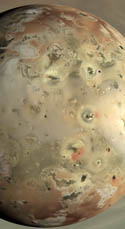



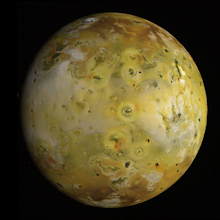

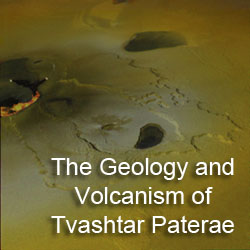
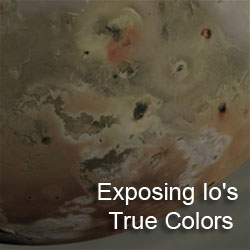
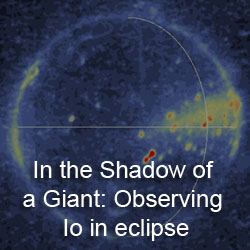
No comments:
Post a Comment